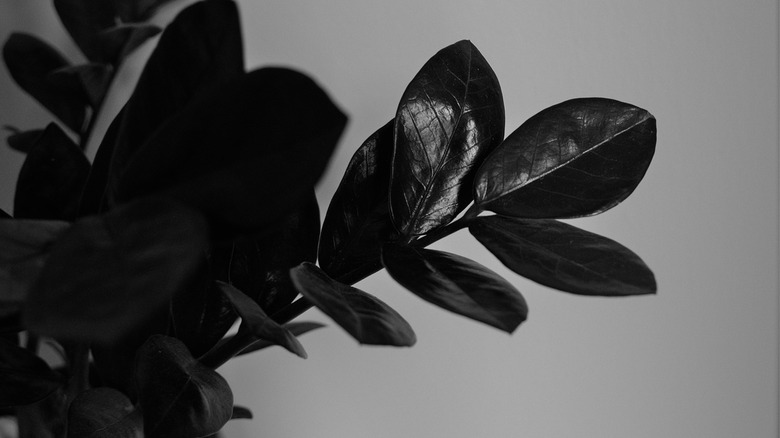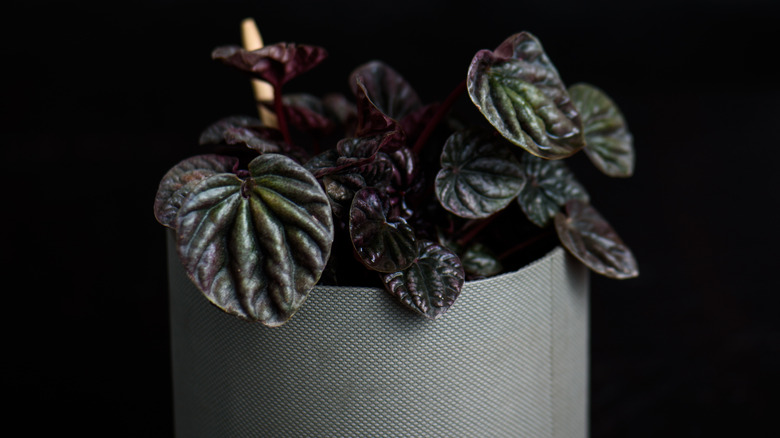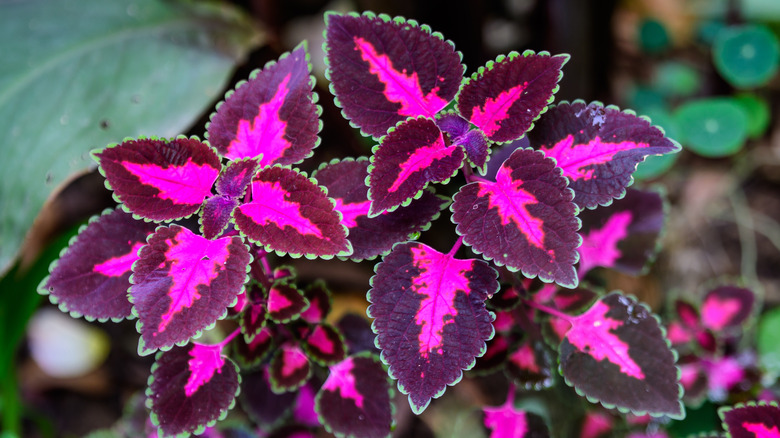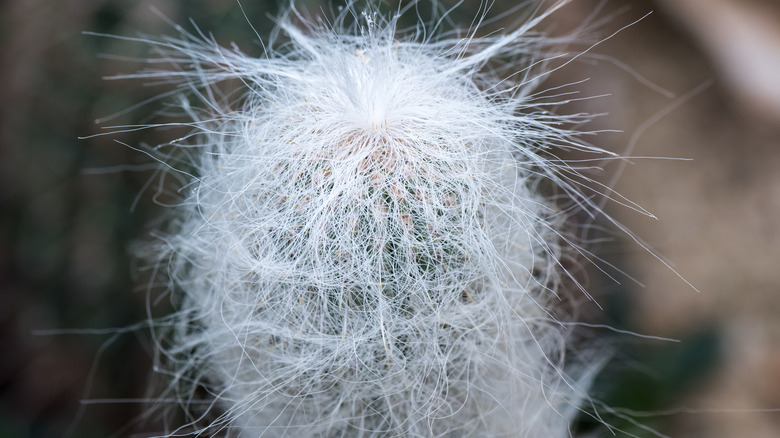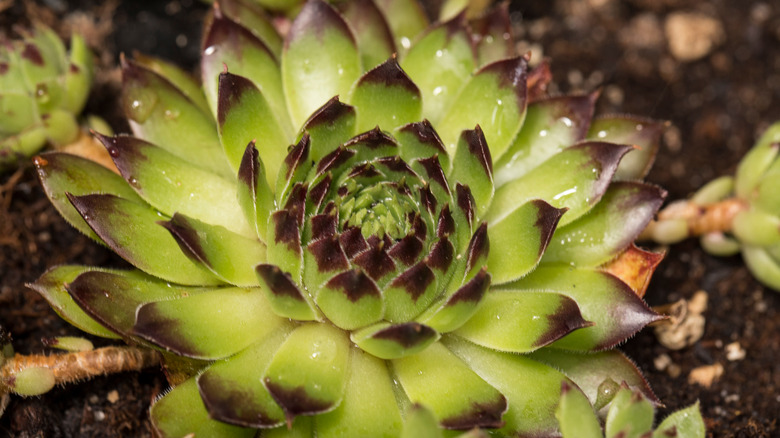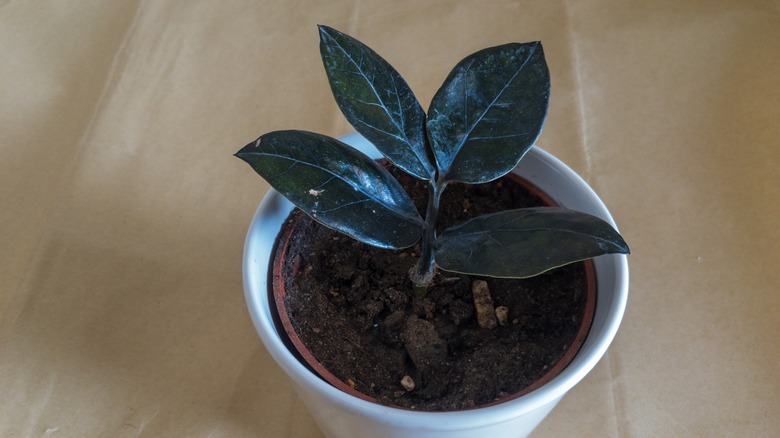5 Spooky Plants That Will Look Right At Home With Your Halloween Decor
Each year skeletons, pumpkins, and bats put our homes in the Halloween spirit. However, we think that you could add something with a bit of life to your usual display of frightening characters. Plants can bring a unique feel to your average setup. There are many spooky-looking options to choose from when you know what you're looking for. Swap out your typical green spider plants or blooming annuals in your window sill for the jet-black foliage of the raven ZZ plant or the moody variegated leaves of coleus.
Dark conversation starters such as these are a great way to change the mood in your home with little effort. Often, they are just as much work as your average houseplant and they stay beautiful all year round, so you can enjoy their gothic spirit no matter the season. Keep in mind that all houseplants need specific care as they are grown indoors, which may be different from their outdoor growing requirements, especially in the cooler fall and winter seasons. The Sill recommends indoor gardeners pay attention to their plants' needs as the weather changes so you don't have to mourn your delightfully haunting plant as Halloween approaches.
Black peperomia
Black peperomia (Peperomia caperata) is a ground-cover plant that is commonly grown indoors as tropical vegetation in the United States. Native to Brazil, this evergreen herbaceous species should be grown in rooms where it is provided with medium levels of humidity, warm temperatures, and bright indirect sunlight. When planting or repotting, the black peperomia should be grown in a well-draining potting mix, and it will need to be watered regularly. In adulthood, the tropical species grows to about 8 inches tall and 2 feet wide, at which time it will produce spikes of white flowers in the summer and fall.
The black peperomia plant displays darkly hued heart-shaped leaves with deep ripples, as told by North Carolina State Extension. These leaves are tightly packed together and they can appear green, purple, red, or even black. Because of these moody color options, the plant pairs wonderfully with the gothic decor that you would deck your home out with during Halloween. Thankfully, this plant is low maintenance and evergreen, so even during other holidays, it will be filled with gorgeous thick foliage.
Coleus
Coleus (Coleus scutellarioides) boasts colorful leaves that are described as neatly serrated and soft. The plant is wildly popular among houseplant owners for its leaves, which can be green, purple, pink, red, black, and yellow, or a mix of two or more colors. Among single-colored varieties of houseplants, this species works as a great contrast with its textured foliage and bright colors. According to the Missouri Botanical Garden, coleus' leaf color combinations are infinite. You can use several of these unique plants in your Halloween decor to bring moody pops of purple, black, and green to your haunted design.
Keep in mind that coleus plants do need some attention to stay alive. This perennial houseplant prefers soil that is moist, rich, and well-draining and needs some indirect light. Sunlight that is too bright can ruin the coloration of the plant's leaves or even kill the plant. Make sure you keep your coleus warm as it is a tropical plant and expect it to grow up to 3 feet tall and wide depending on the cultivar you are raising. Though the blooms on these plants are insignificant, they will blossom throughout the summer and into the fall when they are cared for properly. Finally, the flowers should be cut off to redirect energy to the plant's beautiful leaves.
Old man cactus
If your home is covered in fake cobwebs during the Halloween season, the old man cactus (Cephalocereus senilis) will be perfect for you. It is named after the white hairs that cover its body. Usually, the hairs are compared to the wispy white hairs of an old man, hence the name, but during fall they can be reimagined as thick cobwebs covering the plant. Besides its most obvious characteristic, the old man cactus can also be identified by its cylindrical stem and tall growth habit. According to GDNC Nursery, the cactus can grow taller than 40 feet tall in its natural environment.
To care for an old man cactus, you'll need well-draining cactus potting soil, a sturdy pot, and a sunny window for it to live in. This species needs plenty of direct sunlight and warm temperatures in order to survive. It should also be provided with infrequent but deep watering. This is a relatively strong variety that can withstand cooler temperatures, partial shade, and some neglect, but keeping it healthy with the right kind of care will keep both you and your plant happier.
Black hens and chicks
Black hens and chicks (Sempervivum 'Black') have been popular houseplants and garden plants for some time now. They are known for growing quickly and multiplying, even with very little care. As mentioned by Walters Gardens, the succulent can be grown almost anywhere, even in poor or dry soil. The best conditions you can give hens and chicks plants are well-draining soil, direct sunlight, and infrequent watering. When provided with the right kind of care, this hardy plant can grow up to 1 foot tall and spread widely as a cluster. Usually, houseplant owners keep their hens and chicks from spreading too rapidly by keeping them in a pot.
Most hens and chicks varieties are characterized by bright green succulent leaves that are tipped with some red. Yet, there is one black cultivar that is green in the middle with deep black tips. The black variety of hens and chicks can be a difficult find, but it goes perfectly with the moody decor that you see during the fall season. When Halloween approaches, try growing this darker variety to add some spooky texture to your indoor garden.
Raven ZZ plant
The raven ZZ plant (Zamioculcas zamiifolia) is a striking species that features darkly colored leaves and stems that become even darker as the plant grows older. After just a few years, your raven ZZ plant will be nearly black, or you can buy a pre-grown specimen that you won't have to wait for. The leaves of this plant in the aroid family are described as pinnate and glossy by the University of Florida. Sometimes it may be mistaken as a fake plant because its foliage and branches appear so shiny.
If you find it difficult to grow houseplants, this gloomy cultivar is for you. The raven ZZ plant is known for its ability to grow in conditions most plants would die in. This drought-tolerant plant should be placed in an area that receives low light with a well-drained potting mix and infrequent watering. Zamioculcas zamiifolia thrives when it is left to its own devices, much like a sulking vampire or a terrifying horror movie villain.
